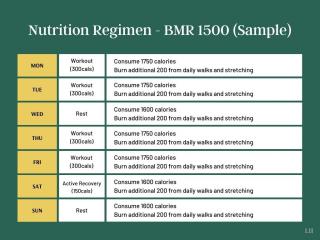Prediabetes is a common condition. The CDC reports that 96 million Americans or 1 in 3 people or about 34% of adults have prediabetes.What’s alarming is that over 84% or 8 in 10 of people have prediabetes and don’t know they have it.
Are you among this group?
Here are some relevant details and facts on prediabetes and the action you need to take to stay healthy. The first step in managing prediabetes is understanding what a prediabetes diagnosis means. Read on to learn more about this diagnosis and what you can do.
What Are The Warning Signs Of Prediabetes?
What’s Prediabetes?
Prediabetes is named as it is a precursor or an early stage of type 2 diabetes. It means you have a higher than normal blood sugar level, but it’s not high enough to be considered type 2 diabetes. Prediabetes are also referred to as:
Impaired Glucose Tolerance (IGT) indicating a higher-than-normal blood sugar after a meal. Impaired Fasting Glucose (IFG) indicating a higher-than-normal blood sugar in the morning before eating.A normal blood glucose level is less than 70 mg/dL. If you have prediabetes, your blood glucose levels will rise to 100 mg/dL-125 mg/dL. When your blood glucose level goes above125 mg/dL, you are diagnosed with diabetes.
What Causes Prediabetes?
The prediabetes condition, which is marked by abnormally high blood sugar or glucose, is because your body doesn’t use insulin properly. Insulin is a hormone secreted by your pancreas which regulates the blood sugar levels for energy.
The glucose in your body comes from food. Your pancreas releases insulin into the blood when you eat. During digestion, sugar enters your bloodstream. Insulin lowers the sugar levels in your blood and facilitates its entry into your cells.
When you have prediabetes, this process doesn’t work, and your body doesn’t respond to insulin normally. It means people with prediabetes cannot process blood sugar or glucose properly. Sugar starts to build up in your bloodstream because of the following reasons:
⌄ Scroll down to continue reading article ⌄
⌄ Scroll down to continue reading article ⌄
Your cells become resistant to insulin Your pancreas may not make enough insulin Your pancreas makes more insulin to try to get your cells to respond Increased metabolic disturbance because of a combination of worsening hyperglycemia and insulin resistance.Apart from the above insulin-related causes of prediabetes, your family history, genetics, and lifestyle are also contributing factors.
5 Warning Signs Of Prediabetes
Prediabetes is a serious condition. Without intervention, people with prediabetes have up to a 50% chance of developing Type 2 diabetes within the next 5-10 years. Having prediabetes also puts you at an increased risk of developing heart disease and stroke.
As you know, prediabetes is an early stage of type 2 diabetes. You could have prediabetes for many years and yet show no symptoms at all. This is because prediabetes rarely has any symptoms.
So, like most people with prediabetes, the chances are that it often goes undetected until you develop serious health problems.
The good news is that prediabetes is completely reversible, provided you take the right action, which can only be possible if you know the warning signs.
If you have prediabetes, here are the common warning signs you should look out for. You may have some or all of them.
1. Risk Factors For Prediabetes
Unless you know the risk factors for prediabetes, you may not be able to talk to your doctor in the early stages to reverse your prediabetes condition.
Here are some of the risk factors for prediabetes:
⌄ Scroll down to continue reading article ⌄
⌄ Scroll down to continue reading article ⌄
Being 45 years and above older Being a smoker Having high blood pressure Having high blood sugar levels Having low levels of high-density lipoprotein (HDL) cholesterol Having high levels of triglycerides Having a family history of type 2 diabetes Leading an inactive lifestyle Having polycystic ovary syndrome (PCOS) Having obstructive sleep apnea Had gestational diabetes (diabetes during pregnancy) Giving birth to a baby who weighed over 9 pounds Consuming a heavy diet with processed, red meat and sugary beverages Having certain drugs, steroids, antipsychotics and HIV medications. Having hormonal conditions such as Cushing’s syndrome and acromegaly. Belonging to certain ethnic races such as African-American, Hispanic, Native American, Asian-American race or Pacific Islander.If you have the above risk factors for prediabetes, talk to your doctor about getting your blood sugar checked regularly.
If you’re still not sure if you’re at risk for prediabetes, you can take this 1-minute online prediabetes risk test. Alternatively, you could ask your doctor about getting a blood sugar test.
2. Changes In The Appearance Of Your Skin
One of the warning signs of prediabetes and undiagnosed diabetes is changes in the appearance of your skin. Some of them include:
Skin tags: If you have prediabetes, you may notice skin tags or small skin growths on your body, especially on the eyelids, neck, and armpits. Open Sores, Wounds, and Blisters: People with diabetes can develop open sores, wounds, and blisters on their hands, feet, arms, and legs. Having prolonged high blood sugar levels can lead to nerve damage and poor circulation, making it hard for your body to heal wounds. Skin infections: If you are prone to getting skin infections, you may have diabetes. You may notice symptoms such as hot, swollen, itchy, dry, or scaly skin with rashes and blisters that may also be painful. You could have a white discharge and experience irregular periods and frequent yeast infections. Acanthosis Nigricans: Acanthosis Nigricans is a sign of insulin resistance related to polycystic ovarian syndrome (PCOS). It does not happen in every case of PCOS, though. When you get Acanthosis Nigricans, you will notice the development of dark, thick, and velvety patches on your skin. You will see this darkened skin or discoloration usually around the knees, elbows, neck, armpits, and knuckles.3. Blurry Vision
Prediabetes and diabetes can affect your vision and put it at risk. Diabetes is the leading cause of the latest cases of blindness in adults. Retinopathy, glaucoma, and cataract are some of the common eye diseases caused by diabetes.
Retinopathy can develop in the prediabetic stage. Retinopathy refers to the eye condition when the blood vessels in the retina become swollen, leak, or shut off completely. Abnormal blood vessels can grow on the retinal surface area and cause bleeding that obscures vision, the formation of a retinal detachment, advanced forms of glaucoma, and eventual blindness.
Blurred vision is a prominent warning sign of prediabetes. If you experience any vision changes, it’s time to get your blood sugar levels tested.
Sometimes, you may not experience any visible signs of vision problems and yet have prediabetes. Your best bet is to schedule regular preventive eye exams to avoid vision loss.
4. Fatigue
You may feel unusually tired all the time if you have prediabetes. One of the first symptoms of prediabetes is feeling tired all the time.
⌄ Scroll down to continue reading article ⌄
⌄ Scroll down to continue reading article ⌄
People who have prediabetes often feel exhausted even when they have done no strenuous activity. They also sleep more than usual, even during the daytime. Tiredness and fatigue may have to do with the high and low blood sugar levels combined with the inability of your body to use insulin effectively.
5. Weight Gain
Another sign of prediabetes is weight gain or being overweight.
You may be having insulin resistance. People with insulin resistance tend to put on weight easily. As a result, they will probably also see an increase in their waist circumference.
You could also notice having fat around your waistline if you have prediabetes. This may be because of weight gain and a loss of muscle mass owing to insulin resistance.
When To See A Doctor
If you’re prediabetic, you should regularly get your blood glucose screened.
Additionally, if you follow an unhealthy and inactive lifestyle or have a family history of diabetes, it’s a good idea to schedule a screening.
If you’re 45 years and above, you should get a blood glucose screening once every three years. If you already have diabetes, keep in regular touch with your doctor to adjust your insulin or medicine dosage.
Final Thoughts
Prediabetes refers to the condition when you have higher than normal blood sugar levels but not high enough to be considered as type 2 diabetes. Unmanaged prediabetes can lead to type 2 diabetes.
⌄ Scroll down to continue reading article ⌄
⌄ Scroll down to continue reading article ⌄
Prediabetes doesn’t always have symptoms, but it comes with the listed warning signs in this article.
Early diagnosis, treatment, and lifestyle changes can return your abnormal blood sugar levels to a normal range, effectively delaying and even preventing type 2 diabetes.
So it’s critical to visit your doctor regularly and get your blood sugar levels tested, especially if you’re at risk for prediabetes.





























































